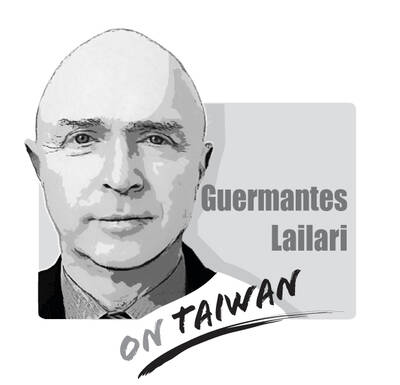Since the presidential election in January, Beijing has reportedly been reducing the number of Chinese visitors to Taiwan. This has sparked a mixed reaction, with pessimists expressing concern over reduced tourism revenues and weakened economic ties with China, while optimists view it as the push Taiwan needs for an economic transformation.
For the latter, it is an opportunity for the nation to diversify and improve its tourism industry to attract more foreign visitors. What should Taiwan do?
Before proceeding to consider potential overseas markets, it would be helpful to look at some statistics. In Taiwan, Chinese tourists are often negatively perceived. While some criticisms are justified, a majority of them stems from differences in political ideologies.
For instance, it is generally believed that Chinese tourists spend less money on shopping than their Japanese counterparts. This might be correct for now, but things might change as the Chinese economy grows and more independent tourists come to Taiwan.
A walk along the east coast would confirm that since President Tsai Ing-wen (蔡英文) took office, the number of Chinese tourists have slumped. From Hualien County’s Guangfu (光復), Ruisuei (瑞穗) and Yuli (玉里) townships to Taitung County’s Guanshan (關山) and Chihshang (池上) townships and Taitung city, restaurants, hotels, shops and tour bus operators have been complaining about declining business.
When asked to comment on the government’s plans to attract more tourists from Southeast Asia, the typical response is that markets in Southeast Asia are generally 10 years behind Taiwan and the cultural differences and language barriers pose long-term challenges.
How should Taiwan respond to the shrinking number of Chinese tourists? If the transition of power in Taiwan has indeed prompted Beijing to abort policies that benefit Taiwan, the nation must respond by turning the crisis into an opportunity.
First, Chinese investors own large shares in major corporations in Taiwan, including travel agencies, hotels, shops, tour bus operators and amusement parks. While their widespread presence has a lot to do with their political and economic ambitions, the declining number of Chinese tourists could cause significant losses to their businesses.
Considering that many of the investors are closely affiliated with powerful government officials, Beijing should soon allow more tourists to visit Taiwan.
Second, how can Taiwan change the nation’s tourism culture and instill aesthetics and a sense of beauty into everyday life? Over the past few years, there have been significant improvements in the facilities and amenities at tourist sites, notably at train stations and public restrooms. However, these are only the first steps. The government must build major transportation networks, including expanding the high-speed rail, subway systems and YouBike services to help tourists travel easily.
There should also be variety in accommodation options, from star-rated hotels to cozy bed-and-breakfasts.
Finally, it is essential to explore new markets in Southeast Asia, as well as Europe and the US. Cultural differences might be an obstacle, but things might begin to change in a few years, as Southeast Asian immigrants in Taiwan bring about further cultural exchanges.
Southeast Asia is a big market with a large population. It is likely that Taiwan could find a niche market for its tourism industry. Of course, it is also important that Taiwanese show they are hospitable and friendly.
After all, looking down at your customer while trying to sell them goods never works.
Wu Yi-Yen is an associate professor in Tungnan University’s tourism department.
Translated by Tu Yu-an

George Santayana wrote: “Those who cannot remember the past are condemned to repeat it.” This article will help readers avoid repeating mistakes by examining four examples from the civil war between the Chinese Communist Party (CCP) forces and the Republic of China (ROC) forces that involved two city sieges and two island invasions. The city sieges compared are Changchun (May to October 1948) and Beiping (November 1948 to January 1949, renamed Beijing after its capture), and attempts to invade Kinmen (October 1949) and Hainan (April 1950). Comparing and contrasting these examples, we can learn how Taiwan may prevent a war with
A recent trio of opinion articles in this newspaper reflects the growing anxiety surrounding Washington’s reported request for Taiwan to shift up to 50 percent of its semiconductor production abroad — a process likely to take 10 years, even under the most serious and coordinated effort. Simon H. Tang (湯先鈍) issued a sharp warning (“US trade threatens silicon shield,” Oct. 4, page 8), calling the move a threat to Taiwan’s “silicon shield,” which he argues deters aggression by making Taiwan indispensable. On the same day, Hsiao Hsi-huei (蕭錫惠) (“Responding to US semiconductor policy shift,” Oct. 4, page 8) focused on
Taiwan is rapidly accelerating toward becoming a “super-aged society” — moving at one of the fastest rates globally — with the proportion of elderly people in the population sharply rising. While the demographic shift of “fewer births than deaths” is no longer an anomaly, the nation’s legal framework and social customs appear stuck in the last century. Without adjustments, incidents like last month’s viral kicking incident on the Taipei MRT involving a 73-year-old woman would continue to proliferate, sowing seeds of generational distrust and conflict. The Senior Citizens Welfare Act (老人福利法), originally enacted in 1980 and revised multiple times, positions older
Nvidia Corp’s plan to build its new headquarters at the Beitou Shilin Science Park’s T17 and T18 plots has stalled over a land rights dispute, prompting the Taipei City Government to propose the T12 plot as an alternative. The city government has also increased pressure on Shin Kong Life Insurance Co, which holds the development rights for the T17 and T18 plots. The proposal is the latest by the city government over the past few months — and part of an ongoing negotiation strategy between the two sides. Whether Shin Kong Life Insurance backs down might be the key factor